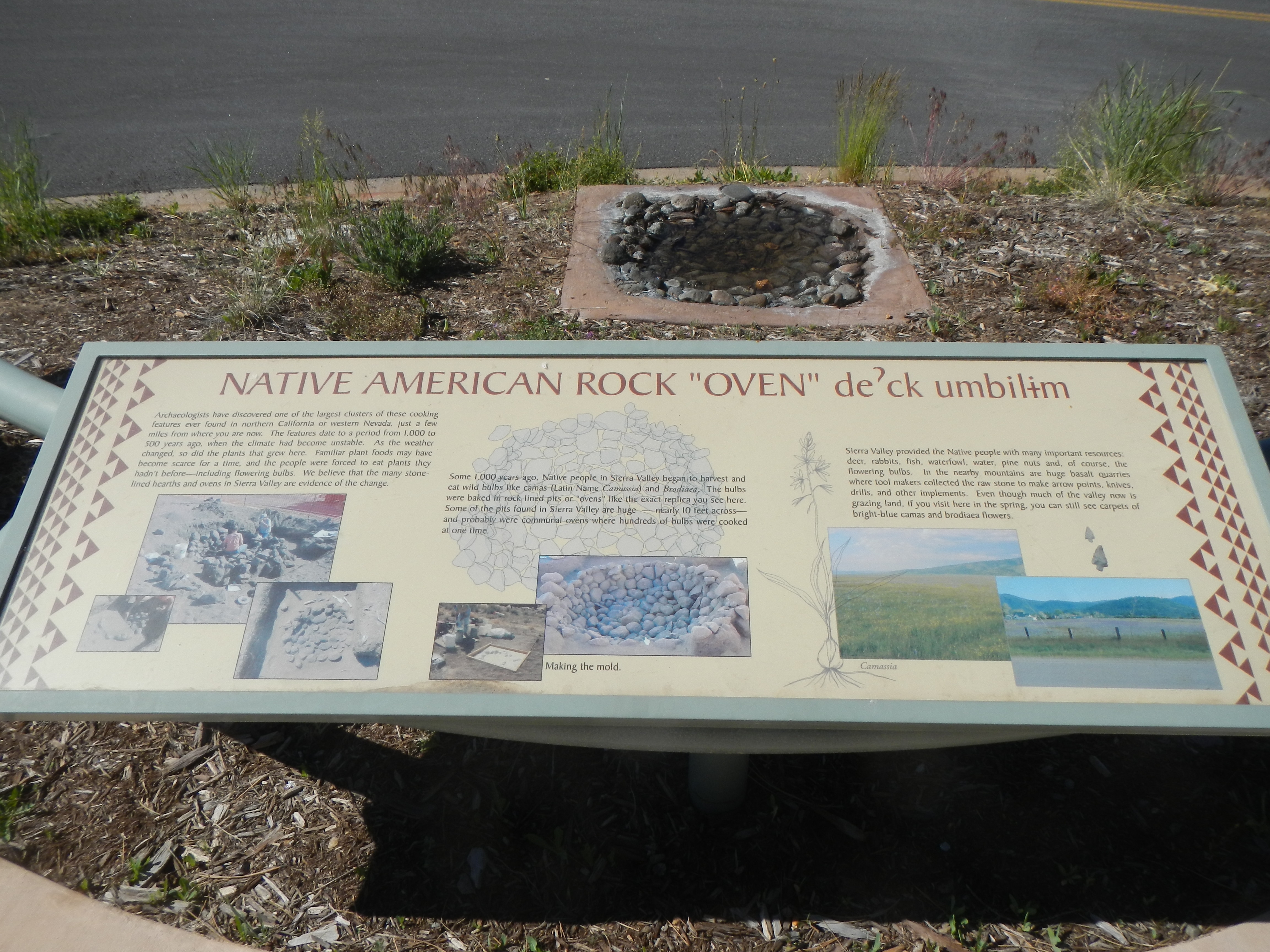Photograph as originally submitted to
this page in the Historical Marker Database
www.HMdb.org.
Click on photo to resize in browser. Scroll down to see metadata.
Photographer: Barry Swackhamer
Taken: June 4, 2013
Caption:
Native American Rock “Oven” de?ck umbil+m | Additional Description: Archaeologists have discovered one of the largest clusters of these cooking features ever found in northern California or western Nevada, just a few miles from where you are now. The features date to a period from 1,000 to 500 years ago, when the climate had become unstable. As the weather changed, so did the plants that grew here. Familiar plant foods may have become scarce for a time, and the people were forced to eat plants they hadnít before – including flowering bulbs. We believe that the many stone-lined hearths and ovens in Sierra Valley are evidence of the change.
Some 1,000 years ago, Native people in Sierra Valley began to harvest and eat wild bulbs like camas (Latin Name
Camassia) and
Brodiaea.The bulbs were baked in rock-lined pits or “ovens” like the exact replica you see here. Some of the pits found in Sierra Valley are huge – nearly 10 feet across – and probably were communal ovens where hundreds of bulbs were cooked at one time.
Sierra Valley provided the Native people with many important resources: deer, rabbits, fish, waterfowl, water pine nuts and, of course, the flowering bulbs. In the nearby mountains are huge basalt quarries where tool makers collected the raw stone to make arrow points, knives, drills, and others implements. Even though much of the valley now is grazing land, if you visit in the spring, you can still see carpets of bright-blue camas and brodiaea flowers.
Submitted: June 21, 2013, by Barry Swackhamer of Brentwood, California.
Database Locator Identification Number: p245249
File Size: 3.130 Megabytes
To see the metadata that may be embedded in this photo, sign in and then return to this page.
